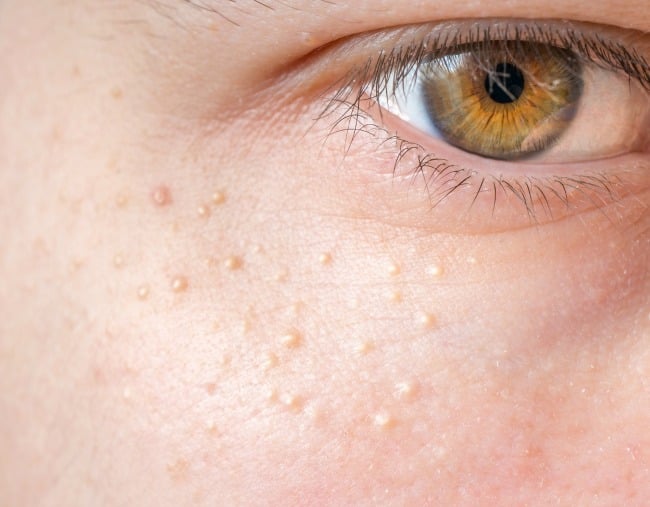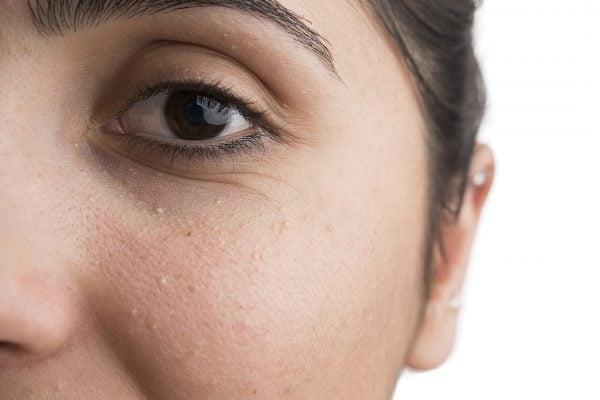
They kinda look like pimples, but they’re not.
Those little white dots that often occur on the face and around the eyes are in fact called milia. Here’s why they occur, how you can get rid of them, and how you can stop them from coming back.
What causes milia?
“There are two kinds of milia, primary and secondary,”said Darlene O’Gara , Australian Skin Clinics’ National Training Manager.
Primary milia occur when dead skin cells build up in the pores, eventually becoming tiny cysts. Secondary milia is caused from infection and skin damage such as the blistering caused by sunburn.
“Milia is a buildup of keratin, a protein in the outermost skin layer which forms your hair, nails and skin,” said O’Gara.
“They commonly appear in conjunction with other skin conditions, such as rosacea, or when skincare and makeup products clog the pores.”
Milia can occur on anyone, regardless of gender, age or skin type.
Where does milia appear?
While milia can be found anywhere on the body, it is most commonly found on the face.
“Milia is most common on the nose, cheeks and around the eyes where the skin is softer and more susceptible to damage, which is why it’s so important not to try and pop them yourself,” said O’Gara.
How to treat milia.
Milia don’t have an opening onto the skin, which is why they can’t be removed by a simple squeeze or pop.

Top Comments
I've got one of these annoying milia things, can't afford a dermatologist though, so will have a go at DIY minor surgery. If i make a small incision the cyst should just pop out right?